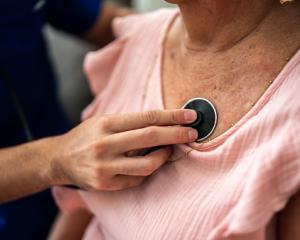
Led by now Wellington-based Prof Sandy Mandic, the Built Environments and Active Transport to School (Beats) Study surveyed thousands of adolescents in Dunedin and Otago between 2013 and 2023.
Over the years, the study has examined many factors around young people’s transport to and from school, ranging from roading infrastructure and distance, to safety concerns and bag weights.
Prof Mandic said, while the research project was not specifically set up to study adolescents’ activity levels during the pandemic, it was still one of the first to show data around activity levels in the pandemic.
Among them were that walking to school rates fell from 30% before the pandemic, to 21% during the pandemic. And among those living within walking distance, walking rates decreased from 68% to 54%.
Prof Mandic said the data did not reveal why this drop had occurred, so it would be interesting to look into it further.
The research also showed that half of adolescents thought that a distance of up to 2km was reasonable for walking to school, whereas two-thirds considered distance of up to 1.5km to be reasonable for walking to school.
Two out of five adolescents considered that walking to school for up to 20 minutes was reasonable.
"Along with the infrastructure, topography in a place like Dunedin will have an influence on adolescents’ willingness to walk or bike to school, as well. Hills can be a significant barrier," Prof Mandic said.
Prof Mandic said the findings highlighted the need for renewed efforts from across a range of sectors to address barriers and encourage active school transport among adolescents, including practical policy responses to future pandemic or similar disruptive events.
"The findings also suggest the need for sustained investment in multilevel interventions that target individuals, communities, the built environment and policy to reduce reliance on private vehicles and increase rates of active forms of transport to school," she said.
Prof Mandic said looking back, the 10-year Beats Research Programme (2013-2023) represented "a world-class example of the power of shared vision, transformational leadership, successful cross-sector collaboration, excellent teamwork, perseverance, project management ... and much more".
A 20-page infographic report presenting various aspects of the Beats Research journey, including its research impact and policy implications, is available on the Beats Study web page: https://agileresearch.nz/beats/















